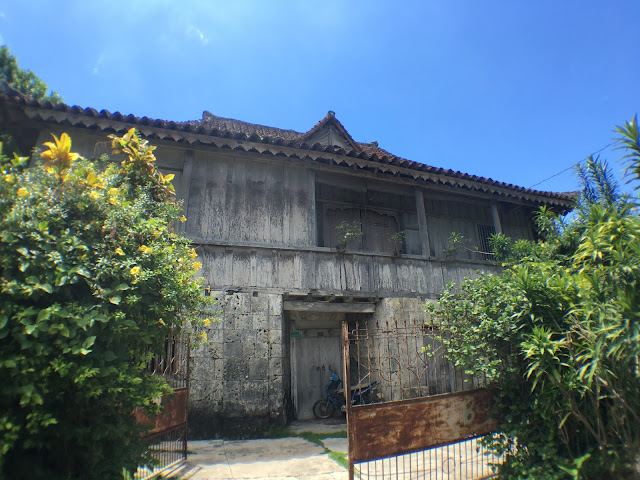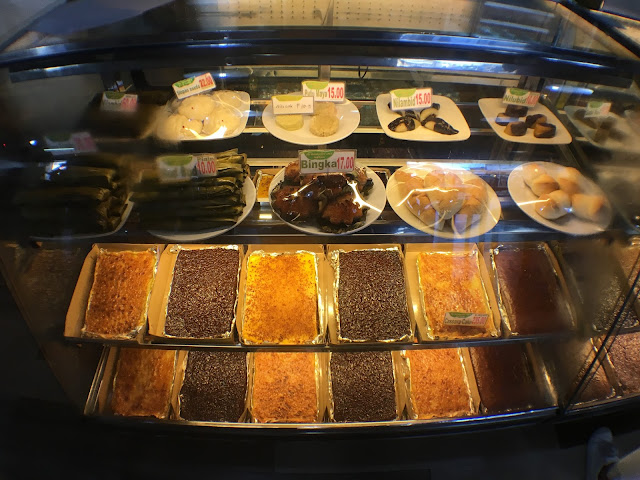My images of Bohol are that
of its white sands, cerulean seas, and verdant hills.
I remember its magnificent
churches, which were badly damaged by an earthquake in 2013. Beside one of these churches, at the
astonishing Dauis Church convent, I had one of the most exquisite dining
experiences. I also have fond memories
of the Bee Farm, which at that time satisfied all my vegetarian cravings. I
also recall how cute the tarsiers, one of the world’s smallest primates, were.
Ever since my first Bohol visit years ago, I longed to return
and see more of this province. Like many
other tourists, I also wanted my selfie taken with the world famous Chocolate
Hills as a backdrop. Experiencing dining on one of Loboc River’s
floating restaurants and spending a day relaxing at Anda Beach were also on my
wish list.
So, when I got an email from
Philippines AirAsia about the coverage of the Sandugo Festival, I was
elated. I volunteered to accompany select
members of the media on that weekend trip, co-organized by the Bohol Tourism
Office.
Fascinating Culture
Our itinerary centered on
the commemoration of the Sandugo event, which is probably Bohol’s greatest gift
to the world. This historic blood
compact, which happened in 1565 between Spanish Explorer Miguel Lopez de
Legazpi and Datu Sikatuna, chieftain of Bohol, is said to be the first international treaty and have planted
the seeds for the United Nations.
Our tour guide, Doris Obena, proudly announced that this year’s
festival highlight, the “Bangga sa Kuradang” street dancing, is more faithful
to Bohol’s rich heritage and culture with the adoption of the Kuradang as the inspiration. Kuradang
is a native Visayan dance widely practiced in Bohol. It has become part of celebrations and is
also a feature in the Loboc River cruise.
Props to the organizers for
pushing for a more authentic experience for tourists, instead of giving travelers
another Sinulog, Dinagyang or Ati-Atihan!
And, I must stay, the melody
of the song sticks. Weeks later, it
still partly plays over and over in my head.
Well, I don’t understand the lyrics,
but I comprehend enough to know how much it appreciates the richness of
Boholanos’ heritage. Thanks to the zestful
dancers, who gave delightful performances, both on the streets and on the main
stage.
Interesting History
It is not just in the street
dancing that the Boholanos have shown appreciation of its roots. On our arrival in Bohol, the first thing we
did was a Heritage Walk of Tagbilaran City.
Nanet Bolo, the general
manager of Dagohoy World, got the inspiration from a similar tour of
Berlin. She joined us in the Rocha-Lumayag
house, where we also met her Lola Nena.
“She couldn’t remember me, but she remembers her music.” She told us of the 93-year-old family
matriarch, who then graciously played the piano for us.
The tour also included a
visit and lighting of candles at the Tagbilaran Cathedral; a tour of the house
of former Philippine President Carlos P. Garcia turned heritage museum; and a
walk along the streets of the trading hub of Spanish and Filipino elite in
Sitio Ubus.
Of course, part of any
place’s heritage is its food. In the
middle of the long walk, we stopped by Jojie’s Painitang
Bol-anon for a taste of Bohol’s kakanins
or rice cakes.
The two-hour
tour costs P 800.00, for a group of 10 people.
Beloved Environment
We also did
the Legacy Experience Tour, a tree-planting activity. This tour lets everyone pitch in with the efforts of restoring another
Bohol heritage – its forests.
We went to
the Bohol Biodiversity Complex for this, and along the way, we passed by some
of Bohol’s majestic churches; caught a glimpse of the Loboc River; and saw an
example of how reforestation should not be done, at the Loboc Manmade Forest.
The activity
started with a briefing that emphasizes the importance of planting endemic
species, followed by a brief tour of the facility, then the tree planting. I
chose to plant a Banaba tree both because of its medicinal properties and
beautiful flowers.
And, more
On our way
back to Tagbilaran City, we passed by the Chocolate Hills and the Tarsier
Foundation.
But, these
were not all of what we did during our three-day Bohol trip. We also watched the Sandugo Song Festival briefly, attended the Bohol Day
celebration, visited the Sandugo product showcase, and had dinner at the
International Fusion Nights.
We also
partied with the young Boholanos at the AirAsia Red Hot Party. Exhausting, right?
Glad we were
accommodated at the Be Grand Hotel, because Be Grand, one of the Panglao Island’s
newest resorts, was beyond relaxing, beyond idyll, really beyond the expected.
We couldn't stop oohing and aahing during our
entire stay. We actually had difficulty
pulling ourselves out of our favorite spots in the resort to go to the Sandugo
Festival activities.
AirAsia, the
World’s Best Low-Cost Carrier for seven
consecutive years, offers three daily flights from Manila (NAIA Terminal 4) to
Tagbilaran Bohol. Keep updated with AirAsia’s latest promotion and
activities via twitter (@AirAsiaPH), Philippines AirAsia Facebook Page, Instagram (@AirAsiaPh), and on Viber
public chat (@AirAsiaPh).




























0 comments